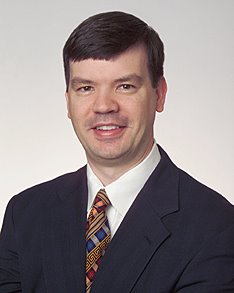
The Boston Herald last week did a "gee whiz" piece on a dermatologist(!) promising to start performing breast enlargement via fat grafting despite the fact that there is no literature documenting it's either safe or effective. Over the last year I think I've mentioned this idea once or twice commenting on some of the technology evolving to better harvest stem cells from liposuction aspirate.
Irrespective of whether it's appropriate for your average dermatologist to do large volume liposuction (which is required for harvesting the graft material) and go anywhere near your breasts, there's a couple things that are really troubling with this.
1. Is it a good idea to out pleuripotent stem cells in a cancer prone organ like the breast?
2. What's the effect on mammograms from (inevitable) areas of fat necrosis?
3. Does fat grafting and the internal breast tissue scarring/distortion that will result, prohibit conventional techniques for breast surgery from being performed?
4. Can touch-up grafts be successfully done?
5. Can predictable volumes of graft be obtained in a material (fat) who's success rate traditionally hovers around 50%?
6. Has this doctor established an IRB (internal review board) protocol for this kind of human experimentation (which is what this is?)
Call me a cynic, but I find it unlikely that these kind of issues have really crossed the mind of this dermatologist from the rather flip quotes in the newspaper story. Fat grafting of the breast has a role in the armatarium of breast surgery and is being studied, but "cowboy medicine" like this article describes sticks in my craw. Fat grafts for primary breast augmentation is a subject that demands carefully designed multi-site studies.
Irrespective of whether it's appropriate for your average dermatologist to do large volume liposuction (which is required for harvesting the graft material) and go anywhere near your breasts, there's a couple things that are really troubling with this.
1. Is it a good idea to out pleuripotent stem cells in a cancer prone organ like the breast?
2. What's the effect on mammograms from (inevitable) areas of fat necrosis?
3. Does fat grafting and the internal breast tissue scarring/distortion that will result, prohibit conventional techniques for breast surgery from being performed?
4. Can touch-up grafts be successfully done?
5. Can predictable volumes of graft be obtained in a material (fat) who's success rate traditionally hovers around 50%?
6. Has this doctor established an IRB (internal review board) protocol for this kind of human experimentation (which is what this is?)
Call me a cynic, but I find it unlikely that these kind of issues have really crossed the mind of this dermatologist from the rather flip quotes in the newspaper story. Fat grafting of the breast has a role in the armatarium of breast surgery and is being studied, but "cowboy medicine" like this article describes sticks in my craw. Fat grafts for primary breast augmentation is a subject that demands carefully designed multi-site studies.






5 comments:
Bizarre. Go Sox!
If your fat graft take is 50%, you're not doing it correctly. This is not to say that detumescence should be taken into account.
It certainly can be effective and touch-ups are possible. Not sure why that is a question.
As far as interference with mammograms, breast liposuction in black patients has become accepted and has not been criticized in the same way but clearly creates more scarring.
It's not a clear no-no as you suggest it to be, but yes, more studies will help guide this technique.
It's probably important to emphasize that, on a mammogram, fat necrosis looks exactly like breast cancer...
T. Fiala, MD
anon - 50% graft take is a fairly consistant number reported in the literature for decades. There are practictioners who claim 100% rates and the like, but clearly it is not easily reproducible by others.
There have also been a number of recent well-done studies disproving as effective many of the methods that have been put forth to improve fat cell survival (washing, spinning them in a centrifuge, insulin preps, growth factor baths, etc.).
I'd also differentiate liposuction breast reductions from fat grafting. You don't get the same kind of artifacts (they're different as I understand it)on mammograms apparently from this,and there are many people who would still consider that practice ill-advised.
As a practical matter for either fat grafting or liposuction, if one of those patients subsequently develops breast cancer it could become contentious over whether you violated the "standard of care" by queering up their mammogram leading to a delay in diagnosis. That's neither right nor fair, but it's how our med-mal system forces you to evaluate things. The republishing by the ASPS of it's official position in 2007 condeming fat grafting of the breast really put's you on thin ice at this point.
fat grafting should not interfere with mammograms at all if it is not injected in the the gland itself.
Post a Comment